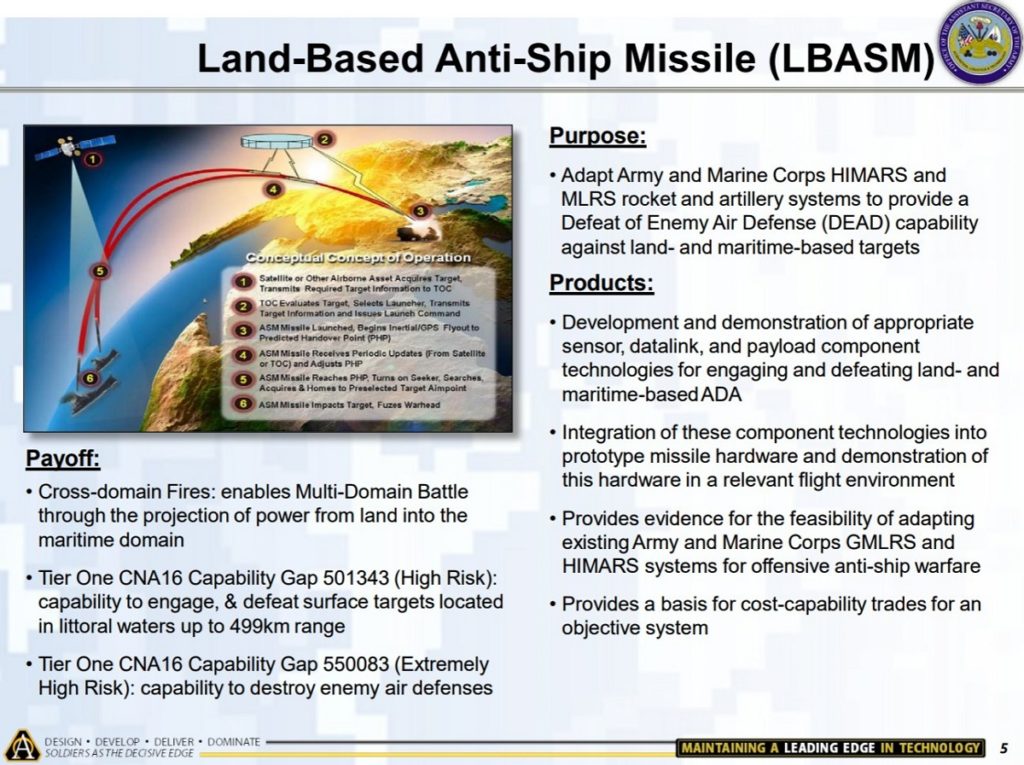According to DefenseNews:
Despite a push from a group of powerful House lawmakers, the final defense spending bill for fiscal year 2021 — released Dec. 21 — slashes the Marine Corps’ efforts to develop long-range precision fires capabilities.[…] the final spending bill contained no funding for Marine Corps Tomahawk procurement and had substantial cuts to the research and development effort for Ground-Based Anti-Ship Missiles (GBASM). The Marines had requested $125 million for Tomahawks and $64 million for GBASM as well as $75 million for long-range fires. The final bill essentially cuts the GBASM budget in half and trims almost $20 million for LRPF research and development — roughly a 25 percent cut.
DefenseNews Jen Judson, December 23,2020
According to The Center for Strategic and International Studies (CSIS), “The reported total Marine Corps request for FY 2021 is $46.0 billion, a nearly 5 percent decrease in real terms from last year’s enacted level of funding [from $47.4 billion in FY 2020]”.
In the ever-shifting and tightening budgets of the United States Department of Defense, these FY 2021 United States Marine Corps’ (U.S.M.C.) budget cuts may mean that the development of the NMESIS (two Naval Strike Missiles on an unmanned 4×4 JLTV, nicknamed “Rogue Fires”) and other Land Based Anti-Ship Missile (LBASM) Long Range Precision Fires (LRPF) plans and options such as the Ground Launched Small Diameter Bomb (GLSDB), or HiMARS Precision Strike Missile may be shelved, delayed, or canceled for the U.S.M.C.’s Force Design 2030 strategy against peer nations.

Currently, the U.S.M.C. is limited to the Lockheed Martin’s Multiple Launch Rocket System (MLRS) rockets with ranges of:
- Guided MLRS Unitary: The combat-proven Guided MLRS Unitary round integrates a 200-pound unitary warhead, providing precision strike for point targets. The Unitary variant has a range exceeding 43 miles/70 kilometers.
- Guided MLRS Alternative Warhead (AW): The Guided MLRS AW round was the first munition developed to service area targets without the effects of unexploded ordinance, complying with the U.S. Department of Defense cluster munitions policy and international policies. The AW variant has a range exceeding 43 miles/70 kilometers and delivers a 200-pound class fragmenting warhead.
- Guided MLRS Alternative Warhead (AW): The Guided MLRS AW round was the first munition developed to service area targets without the effects of unexploded ordinance, complying with the U.S. Department of Defense cluster munitions policy and international policies. The AW variant has a range exceeding 43 miles/70 kilometers and delivers a 200-pound class fragmenting warhead.
These MLRS/HiMARS rocket ranges fall far short of the 1,000+ mile/1,609 kilometers Maritime Tomahawk and the NMESIS JLTV “Rogue Fires” Naval Strike Missile’s 100 nautical miles/185 kilometers sought after by the U.S. Marine Corps for Force Design 2030 to counter peer nations’ warships and the possible threat of an enemy amphibious assault.
According to DefenseNews, several House Republicans filed protests against these Marine Corps LRPFs budget cuts and these protestive actions have yet to be determined on how they will affect the 2021 Defense budget.

The U.S. Army is currently testing two in-service U.S. Navy missiles (without any modifications) to incorporate into its ground-based LRPFs arsenal, and this testing and development could help remedy the $20 million (25-percent) cut in the Marine Corps’ FY 2021 LRPF Research and Development since the U.S.M.C. often purchases the same weapons systems that the U.S. Army fields. However, the U.S. Army does possess trucks, trailers, and vehicles that are unique, longer, and heavier than what the U.S. Marines use so the crossover from the U.S. Army to the U.S. Marines’ usage might not be 100-percent compatible.






